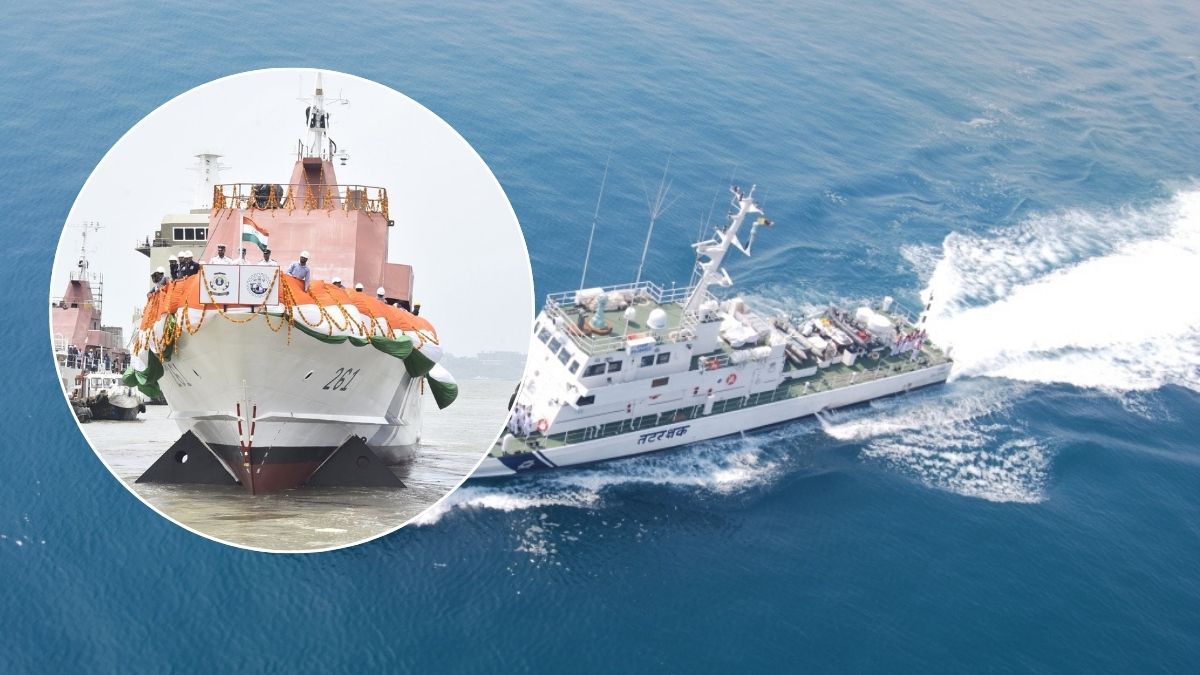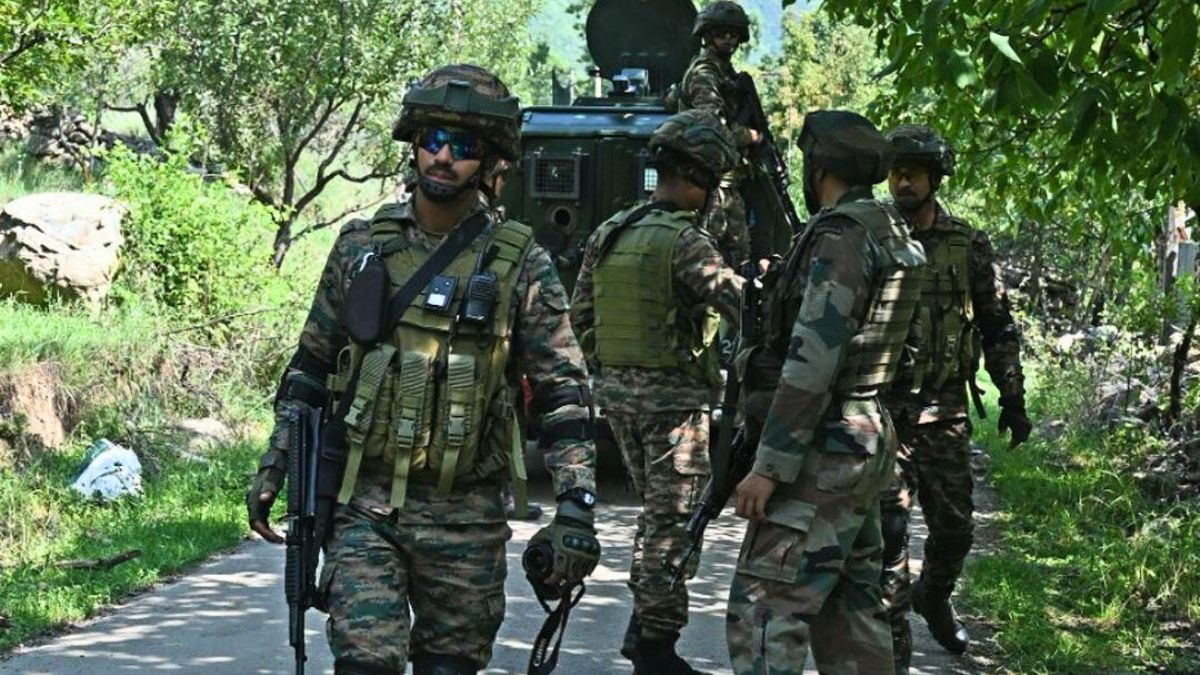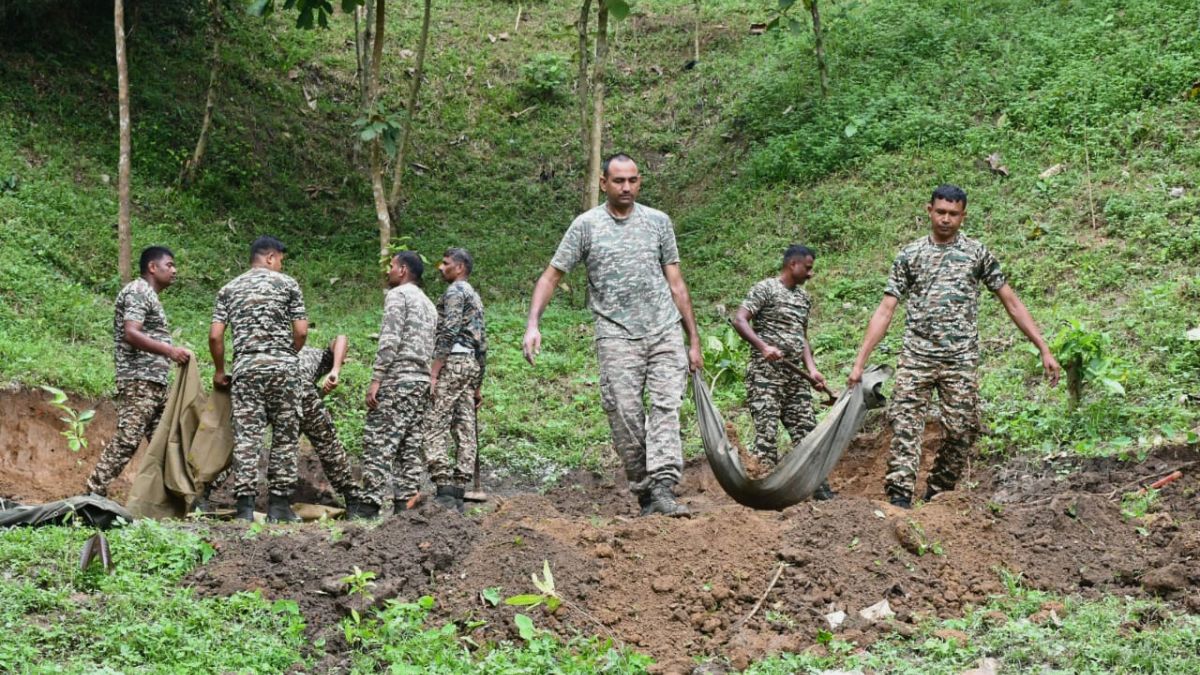ICGS ATAL: How This Fast Patrol Vessel Aligns With Indian Coast Guard’s Future Plans

Goa Shipyard has launched ICGS ATAL in Goa (Image Courtesy: X.com/@IndiaCoastGuard)
In a meaningful addition to its fleet, the Indian Coast Guard’s 6th indigenously built Fast Patrol Vessel (FPV) Atal has been launched by at Goa Shipyard Ltd. Marking a major milestone in India’s Aatmanirbhar Bharat mission in defence manufacturing, Atal is 6th in a series of 8 state-of-the-art indigenously designed FPVs being made by leading PSU GSL.
“The launch of ICGS Atal reflects the indomitable spirit of Team GSL and its unwavering commitment to indigenisation, innovation, and excellence in shipbuilding, even amidst global supply chain challenges,” said GSL Chairman & MD Brajesh Kumar Upadhyay.
ICGS Atal was flagged off on Tuesday (July 29) by Shilpa Agarwal in the presence of Rozy Agarwal, IDAS, PIFA, Coast Guard Headquarters.
What are the key features of Coast Guard’s Atal vessel?
Designed in-house at GSL, the fast patrol vessels are 52 metres in length, with an 8-metre beam and 320-tonne displacement. A key addition to the Coast Guard’s fleet, the high-speed boats are equipped to conduct coastal patrols, island security missions, and offshore asset protection.
Vessels like Atal are remarkably augmenting India’s maritime domain awareness and national security. The ‘Made in India’ vessel has over 60% indigenous content and shall also perform anti-smuggling, anti-piracy and search & rescue operations.
How big is the Indian Coast Guard’s fleet?
Counted amongst the top coast guards, the Indian Coast Guard came into existence in February 1977 with just 7 surface platforms. It has now grown into one of the biggest maritime force in the world, and currently operates 151 ships and 76 aircraft. The first Indian Coast Guard Ship ICGS Kuthar was transferred to them from the Indian Navy.
By 2030, the ICG is poised to achieve its target force levels of 200 surface platforms and 100 aircraft, solidifying its position as one of the world’s premier Coast Guard services.
How is ICG incorporating self-reliance?
Indian Coast Guard’s commitment to self-reliance and modernisation is evident through its continued embrace of indigenous capabilities. Under the Make-in-India initiative, the ICG has entered into several contracts for state-of-the-art air cushion vehicles, advanced communication systems, new generation patrol vessels and helicopters.
In view of the same, the Coast Guard has also joined hands with leading Indian manufacturers like Goa Shipyard for indigenous shipbuilding, ensuring the use of the highest quality materials for maritime safety and security.







